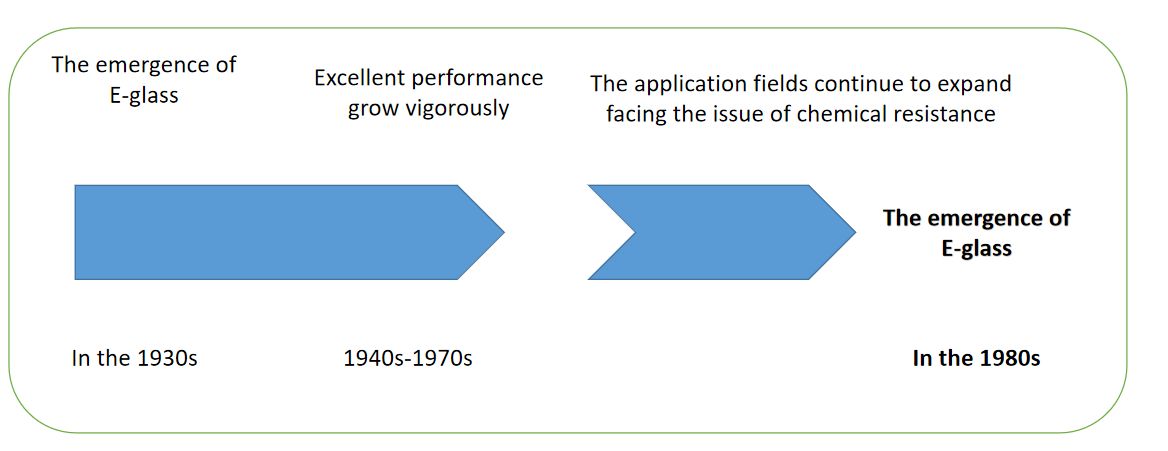
The emergence of ECR glass fiber has addressed the application challenges of glass fiber in the field of corrosion resistance.
Technical Characteristics:
Production is challenging with strict technical requirements and high manufacturing costs.
However, it boasts the best acid resistance among all glass fibers.
The preferred choice for composite materials in harsh environments.
Key Advantages:
Fluorine-free and boron-free, environmentally friendly in production.
Excellent acid resistance, water resistance, stress corrosion resistance, and short-term alkali resistance, with corrosion resistance particularly evident under load conditions.
Mechanical performance is enhanced by 10-15%.
Good temperature resistance, with a softening point approximately 50°C higher than E-glass.
High surface resistance, particularly advantageous in high-voltage resistance.
The evolution of ECR glass fiber can be traced back to the continuous improvement and optimization of glass fiber materials. The following are the major milestones in the development of ECR glass fiber:
Discovery of Glass Fiber: In the early 1930s, American chemist Dale Kleist accidentally discovered glass fiber while conducting experiments with high-frequency electromagnetic waves. This discovery piqued the interest of scientists, leading to the research and development of glass fiber materials.
Commercialization of Glass Fiber: During World War II, glass fiber began to find widespread use in the military sector for manufacturing aircraft components and other military equipment. Subsequently, its application expanded to the civilian sector.
Emergence of ECR Glass Fiber: ECR glass fiber is a specially enhanced type of glass fiber material. In the early 1960s, scientists discovered that adding erbium-doped (Erbium-doped) elements to glass fiber could enhance its optical properties, making it suitable for higher-gain characteristics in optical communication.
Rise of Optical Communication: With the advancement of optical communication technology, the demand for high-performance optical fiber materials increased. ECR glass fiber, as a vital component of erbium-doped optical fibers, found widespread application in optical fiber amplifiers and lasers, significantly enhancing the transmission capabilities and performance of optical communication systems.
Further Development of ECR Glass Fiber: With continuous technological advancements, the preparation techniques and performance of ECR glass fiber have been continuously improved and optimized. Through the development of new doping elements and improved manufacturing processes, the optical properties, stability, and transmission performance of ECR glass fiber have been further enhanced.
Widespread Applications: Today, ECR glass fiber is not only extensively used in optical communication but also in other high-performance optical devices, laser radar, optical fiber sensing, scientific research, and more. Its exceptional optical properties and stability have positioned ECR glass fiber as a preferred material for many optical applications.
Post time: Aug-08-2023




